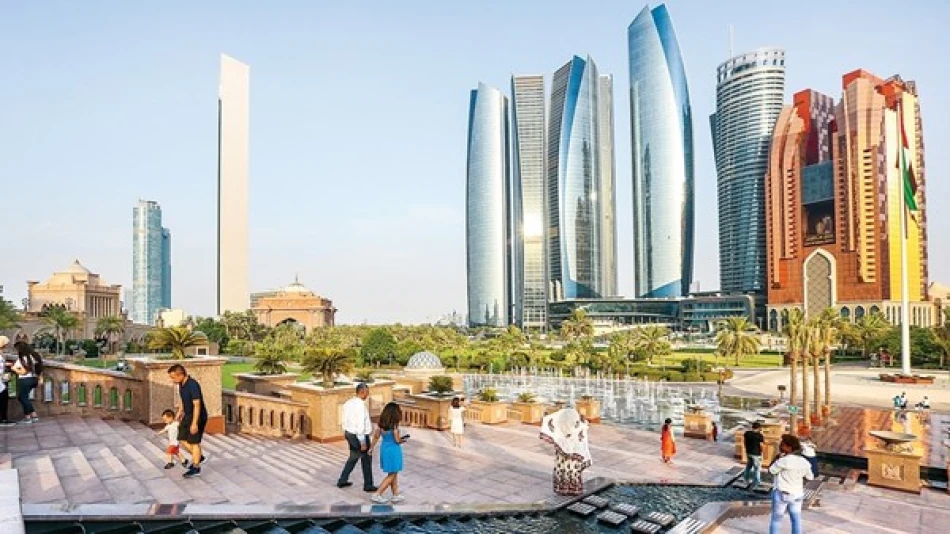
Partly Cloudy Skies Ahead: Your Comprehensive Weather Forecast for Tomorrow
UAE Braces for Mixed Weather Conditions as Summer Heat Peaks
The UAE's National Center of Meteorology has forecast partly cloudy to clear skies for tomorrow, with temperatures soaring to 48°C in some inland areas while coastal regions prepare for potential rainfall and dust storms. The weather pattern reflects the country's challenging summer climate that significantly impacts everything from energy consumption to outdoor economic activities.
Regional Weather Variations Across Emirates
The forecast reveals stark temperature contrasts across the UAE's diverse geography. Liwa, in the country's southern desert region, is expected to experience the highest temperatures at 48°C, while coastal Fujairah will see more moderate conditions with highs of 39°C. This 9-degree difference underscores the UAE's varied microclimates, from scorching inland deserts to relatively temperate coastal areas.
Abu Dhabi and Al Ain are both forecast to reach 47°C, while Dubai and Sharjah will see slightly cooler maximums of 44°C. The northern emirates of Ajman, Umm Al Quwain, and Ras Al Khaimah will experience temperatures ranging from 42°C to 45°C.
Challenging Conditions for Outdoor Activities
Dust Storms and Reduced Visibility
Weather conditions will be particularly challenging in eastern and southern regions, where cumulus cloud formation is expected to bring rainfall. However, winds ranging from 10-25 km/h, with gusts reaching up to 50 km/h, will stir up dust and sand, significantly reducing horizontal visibility.
These conditions pose practical challenges for the UAE's logistics and transportation sectors, which are crucial to the country's role as a regional trade hub. Reduced visibility can impact flight schedules at major airports like Dubai International and Abu Dhabi International, potentially affecting the millions of passengers and tons of cargo that pass through these facilities monthly.
Humidity Patterns Signal Seasonal Trends
Humidity levels will vary dramatically across the emirates, with coastal areas experiencing significantly higher moisture content. Dubai is forecast to see humidity levels reaching 85%, while inland areas like Al Ain will experience much drier conditions with maximum humidity of just 30%.
The forecast indicates that coastal areas will become particularly humid during nighttime and Monday morning hours, a pattern typical of the UAE's summer months when the contrast between land and sea temperatures creates moisture-laden air masses.
Maritime Conditions Favor Coastal Activities
Both the Arabian Gulf and Sea of Oman are expected to remain calm with light waves, providing favorable conditions for maritime activities. The detailed tide schedules show two high tides and two low tides for each body of water, information crucial for fishing communities, port operations, and recreational boating.
For the Arabian Gulf, high tides are scheduled for 16:06 and 02:48, while low tides will occur at 09:11 and 20:34. The Sea of Oman will experience high tides at 11:50 and 23:28, with low tides at 17:56 and 05:45.
Economic and Social Implications
These weather conditions reflect the broader challenges the UAE faces during its intense summer months. The extreme temperatures drive up energy consumption as air conditioning systems work overtime, while the potential for dust storms can impact outdoor construction projects and events.
The variation in conditions across different emirates also highlights why the UAE has invested heavily in weather monitoring and forecasting capabilities. Accurate predictions are essential for managing everything from agricultural irrigation in areas like Al Ain to planning outdoor events in tourism-dependent emirates like Dubai and Abu Dhabi.
For residents and visitors, the forecast serves as a reminder of the importance of staying hydrated, avoiding prolonged outdoor exposure during peak hours, and being prepared for sudden weather changes, particularly in areas where rainfall and dust storms are expected.
Most Viewed News

 Layla Al Mansoori
Layla Al Mansoori






